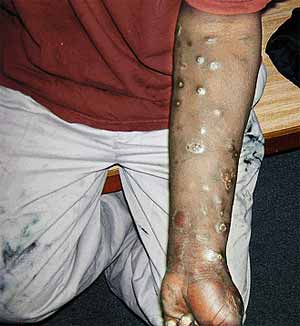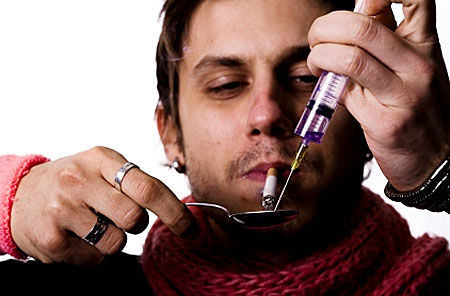Heroin Addiction
The Asian poppy plant seems innocuous enough. Of course, once
you find out that it can be cultivated for a variety of medicinal
purposes, including the addictive heroin, the poppy plant takes
on a certain sinister sheen.
 Heroin Addict
Heroin Addict |
|
Heroin is a highly dangerous and addictive opiate that is processed
from the naturally occurring morphine that is found in the poppy.
The result of this processing is a brown or white powder that
can be injected intravenously, snorted or even smoked.
Junk, Horse, Smack, these are just three of many street names
given to heroin. No one stops in the middle of their daily routine
and says, "I think I will become addicted to heroin today."
That first hit of the drug usually happens because the user needs
to escape from something in their life. Subtle peer pressure can
contribute to the user making the choice to try it the first time.
Heroin initially produces a euphoric feeling and an escape from
problems. The first "feel-good" experience leads the
way to another and then another. Before the user knows it (or
definitely recognizes it), a heroin addiction is born.
When heroin is taken on a regular basis, the body gradually builds
a tolerance to the drug. When this happens the user has to take
more and more of the drug to maintain that buzz. Soon, the body
craves the heroin and has developed an addiction. During the introduction
of the drug into the body, there is at first a euphoric feeling
known as a "rush," then a state of semi-consciousness
that the user weaves in and out of for a period of time. Next,
heroin starts to dull the senses, slowing down any messages that
the body sends to the brain and vice versa.

Heroin Addiction
Long-term
effects of addiction to heroin are many. Collapsed veins from
over-popping heroin are common. The liver has a harder time filtering
the blood, so liver disease is another problem. Infections of
the heart, pulmonary problems, pneumonia, weird abscesses and
threat of HIV/AIDS and hepatitis B & C are just a few of a
host of problems long time users of heroin face.
Rehab is really the only thing that will save someone from this
kind of addiction. There may be a rare few who can beat it on
their own, but it is doubtful because the withdrawal symptoms
are usually too tough for someone to get through alone without
help. Insomnia, vomiting, diarrhea, joint and muscle pain, leg
spasms, aching bones, cold sweat and goose bumps are some of the
major withdrawal symptoms.
The severity of the symptoms peaks at about two to three days
and the worst of the ordeal is over after a week or two. However,
long-term, habitual users can take months before the withdrawals
symptoms shake loose. A drug rehab clinic may use pharmaceutical
approaches such as Methadone, LAAM (levo-alpha-acetyl-methadol)
or buprenorphine to quell withdrawal symptoms and help the heroin
addict stay clean over the long haul.
Heroin addiction can be found anywhere, even though some
people take a common, yet inaccurate view of it being just
on the streets. The process starts as a distraction from the
daily pressures of life, but the great escape really happens
when the addict makes a decision to get clean and goes for
treatment to kick their drug habit.
|


